The ASA is preparing to launch the book The Art of The Adventures of Tintin, with forewords by Steven Spielberg and Peter Jackson. It is a hardcover book and dust jacket, which accompanies the movie " The Secret of the Unicorn "premiered recently, which has as its starting point the Tintin albums. The animation, visual effects and 3D design of this film were developed by Weta and The Art of The Adventures of Tintin was created by artists who transposed the work of Hergé to the big screen. From the earliest conceptual illustrations to scenes, such as we saw on the screen, through the material that was being developed, however, this book provides all fans a unique insight into the creative process that involves the making of a film of this genre. The book also includes some "artwork" produced exclusively for this edition and will have a circulation of 1,000 copies only. The cover price will be around € 35. Here are some shots from the book:
Here is an extraordinary video, in which the makers of "The Adventures of Tintin" explain how they created this amazing movie! Enjoy!
I am yet to watch The Adventures of Tintin on the big screen. Read a few reviews, but I rely more on my peers than the reviewers and friends recommended that I should go watch. And I will. As someone growing up in the 1980s and the '90s before the onslaught of cable TV and Japanese cartoons, I have a strong emotional connect with the characters.
Tintin and his loveable whisky-loving and faithful fox terrier friend Snowy kept me in adventurous company during many a rainy afternoon. I owned very few of Tintin comics (the price was a big deterrent), but read almost all of them thanks to the comic exchange programme that we friends practiced. One which I missed was the very first one, published in 1929, Tintin in the Land of the Soviets (the other was the last but semi-complete - Tintin and Alph-Art).
Wilfing on the Internet a few years ago, I accidentally discovered Tintin in the Land of the Soviets on Scribd. Though the artwork in Tintin's first adventure is a far cry from the ones later ones which carried our young reporter (though he's rarely seen doing what reporters usually do) and his four legged friend to different parts of the world (including India, particularly the kingdom of Gaipajama, complete with all the stereotypes of fakirs and the Indian Rope Trick).
Tintin comics were not only about entertainment but were also a critique on different existing political systems. Be it the coup curry of Latin America or the Japanese interference in China.
Hergé or Georges Remi (this was a favourite question of quizzards during our time as the name Hergé is a result of transposition of Georges Remi's initials) seemed to uphold monarchy as depicted by Tintin's friendship with the Maharaja of Gaipyjama or his help for King Muskar XII of Syldavia in King Ottokar's Sceptre.
Hergé didn't fancy the communists much. Tintin in the Land of the Soviets shows the Bolsheviks in a very poor light (unlike what we were taught in the school texts during our time). This was perhaps the reason why the comic was not available in India.
Tintin had inspired a number of people to produce unofficial comic books - one being Tintin in Thailand where Tintin goes on a 'sex holiday' to Thailand (it also features almost all of the major characters) - and I too produced my own.
I was 14 and in Class VIII when I put my very own Tintin adventure on paper (with pencils, a black Pilot pen and Camlin sketch pens), titling the work Tintin in Shilliont, keeping alive Hergé's tradition of fictitious lands based on real places. Shilliont was Shillong, my home town.
Unfortunately, I lost that comic. If I remember right, Kisholay Ray (now a budding filmmaker in Canada), a good school pal, who had a much better hand at drawing than me also had his own version.
When the Adventures of Tintin had appeared on television as an animated series, I rarely missed an episode and later watched all of them on my mobile phone. While it may seem that nothing can the experience of the comic book in paper it is as engrossing on a tablet device.
Earlier this month Tintin lovers were overjoyed to find a 'Tintin: The Complete Collection' iPad app for only $4.99. But that was too good to be true. The app is no longer available on the Apple App Store. Apparently the developer didn't have the rights to publish the comics and therefore the app amounted to piracy.
This weekend I plan to put on some 3D glasses inside a dark Delhi theatre to see how Steven Spielberg treated my childhood hero. I don't want to step out disappointed.
There are two types of people in this world. Those who like Tintin and those who prefer Asterix. The others - people who don’t know or, worse still, even care - simply do not count.
It goes without saying Tintin fans are superior. They don’t just get off on reading comics but have an appreciation of art, fine storytelling, exotic adventures and detectives in bowler hats.
Asterix is okay - it certainly has its humorous moments but, let’s face it, is more a cartoon strip. He gives adults who like to read comics - we call them graphic novels - a bad name.
One in the eye for boring grown-ups who fail to understand getting old need not mean losing a childish enthusiasm for life is Tintin has become a cool investment.
While you might think it makes more sense to trust overpaid men in pin-striped suits to gamble with your cash the hand of Hérge could be a better bet.
First edition comic books, original art and figurines are all highly collectable - values typically doubling in a decade. With a Stephen Spielberg Tintin movie Secret of the Unicorn on the horizon values could soar higher.
Sales of Tintin items are held at least twice a year in France with the latest last October at the Chateau of Cheverny in the Loire Valley - the inspiration for Captain Haddock’s Marlinpike Hall.
Tintin in the Congo is one of the biggest hits. Perhaps because it is so politically incorrect, with its exploding rhinos, black servants and colonial masters. Last year a rare 1932 edition of Tintin Les Aventures De Tintin Reporter Du Petit Vingtieme Au Congo signed by Hergé as‘ Tintin’ and by his wife as ‘Snowy’ sold for £19,151.
But this is still cheap compared to original art. The world-record for comics is held by Tintin at £508,000 paid in 2008 for a 1932 cover for Tintin en Amérique. A double-page from King Ottokar’s Sceptre sold for a record £212,476 last year.
Collectables too have rocketed in value. A 1987 resin model of Thompson and Thomson in bathing costumes originally sold for £600 hit double its estimate last year at £3,446.
Still think Tintin is just for kids? Admit you are wrong.
But if the numbers fail to convince roll up the sleeves for some hard-headed investment research. No need to be battered into submission by double-speak sales literature or tricked by colourful bar chart projections.
Just go out and buy Tintin in Tibet.
Tintin in America
First published in 1932, this was one of the last few Tintin adventures to be translated into English - the first edition came out in Britain in the 1960s. A reason could be its sensitive themes, including the displacement of native Americans by Caucasian settlers. This is beautifully captured in less than half a page, thanks to Herge's concise, ironic style. Tintin and his faithful dog Snowy bear witness, and also battle Chicago gangsters and corrupt police.
The Blue Lotus
First published in 1936, then redrawn and colored a decade later, The Blue Lotus brilliantly captures the tensions between China and colonial powers Japan and Europe. Tintin and Snowy track down opium traders in Shanghai even as Japan invades in the lead-up to World War II.
This 1943 adventure and the 1945 sequel Red Rackham's Treasure are the inspiration for the current animated feature, The Adventures Of Tintin. A fleamarket bargain leads Tintin and his seafarer friend Captain Haddock into a deadly treasure hunt that spans land and ocean. The sequel introduces nutty genius Professor Calculus for the first time and is a visual ode to the beauties and dangers undersea. Click to read it online. The Seven Crystal Balls
An ancient Inca tomb spells bad news for the archaeologists who discover it and boy reporter Tintin is hot on the case. First published in 1948, The Seven Crystal Balls and its 1949 sequel, Prisoners Of The Sun, were inspired by media hysteria over the deaths of scientists who discovered King Tutankhamen's tomb in Egypt.
Tintin and the Picaros
The final complete adventure in Herge's series, this book was published in 1976. It is inspired by the career of Cuban leader Fidel Castro and sees Tintin dragged into a war between two rival guerilla troops battling to control the fictional land of San Theodoros. Though Tintin's side wins the day, Herge's quiet visual commentary makes it clear that this is not entirely a happy ending. Read to find out why.
By Andrew Patton
A few weeks ago I took the opportunity to go to Belgium and while there I visited several places that were related to Tintin. The first was the Belege De La Bande Dessinee or Belgian Comic Strip Centre. This is a museum dedicated to all comic strips from Belgium. In the atrium of the building is a 6ft (2m) bronze sculpture of Tintin with Snowy. Also in the atrium is a 7ft (2.1m) model of the moon rocket.
After paying for my ticket (250Bf or US$5.50) I started to climb the stairs to the second floor where the exhibits are but before reaching the top, I noticed the first "exhibit". The stairs had a chipped tread like the one the Captain tripped on in The Castafiore Emerald. Under the tread they had a frame from The Castafiore Emerald showing the chipped tread.
On the second floor I saw the next set of Tintin statues. This time it was Captain Haddock, Tintin, and Professor Calculus on the moon. I also noticed that all the signs were in French and Dutch only. While I know these are the languages of Belgium, I would think that an English section would be helpful to most visitors.
Only a small section of the exhibits dealt directly with Tintin and they were interesting. There was a section showing all the doubles that Hergé wrote in the stories (i.e. The Thompsons, the Bird Brothers, the Alembick brothers, etc). Another section showed a gift that Hergé made for Neil Armstrong showing Tintin's moon rocket in the background with everyone welcoming Mr. Armstrong in the foreground with Apollo 11, to the Moon.
My next visit was to the Stockel/Stokkel Metro Station where there is a 240m mural of all the characters in the stories. I was quite amused how the characters from on story were next to another set of characters in another story (the Captain in a snowball from Tintin in Tibet right next to Tintin driving a car in Tintin in Congo).
The list of 18 entries of the best animated films for Oscar 2012 has just released! And The adventures of Tintin is one of them. The nominees for the Academy (which may reach up to five) will be announced at the beginning of the year, and the 84th Academy Awards ceremony will take place on February 26, 2012. Below is the full list, and place your bets:
The Adventures of Tintin (The Adventures of Tintin)
Alois Nebel (untitled in Portuguese)
3 Alvin and the Chipmunks (Alvin and the Chipmunks 3: Chipwrecked)
Operation Present (Arthur Christmas)
Cars 2 (2 Cars)
The Cat in Paris (no translation)
Chico & Rita
Gnome & Juliet (Gnomeo & Juliet)
Happy Feet 2 (Happy Feet Two)
Epic in Hood 2 (Hoodwinked Too! Hood vs.. Evil)
Kung Fu Panda 2 (Kung Fu Panda 2 - in Portugal)
Mars Needs Moms (Mars Needs Moms)
Puss in Boots (Puss in Boots)
Rango
River
The Smurfs (The Smurfs)
Winnie the Pooh (Winnie the Pooh)
Wrinkles (untitled in Portuguese)
From the above list, the films are practically discarded "Alvin and the Chipmunks 3" (not yet debuted in Brazil) and "The Smurfs" because it mixes animation with real actors. "Mars Needs Moms" was a resounding failure of public and critical, both to arrive in Brazil directly to DVD. "Epic in Hood 2" has no "face" of Oscar, thanks to the (low) quality of the animation - technically speaking. Pixar nearly gave up the prize with "Cars 2" by far the weakest film in the history of the studio since Disney could well be shown by re-invest in traditional animation, with "Winnie the Pooh."
Among the other animations, some are not yet debuted in Brazil as "Alois Nebel," "Wrinkles," "Operation Gift", "Happy Feet 2" and "Puss in Boots," so we do not know what to expect. But among those that have already been launched, the highlights of "Rio," "Kung Fu Panda 2" and "Rango," the latter the best of three, in my opinion. If the Academy will consider "The Adventures of Tintin" such as animation, still do not know, but there is no doubt that this is the bet of tintinófilos ...
Writer Anthony Horowitz says there is still a question mark over which Tintin book will be adapted for the sequel to Steven Spielberg's chart-topping film.
Horowitz said earlier this year he had penned a script based partly on Herge's Tintin story Prisoners Of The Sun.
"That was true a few months ago," Horowitz told the BBC, "but I can tell you that I think the second film is not going to be Prisoners of the Sun".
"What it is going to be is still under discussion."
He added: "I've had meetings with the directors and producers and we've talked about ideas and action sequences.
"At the moment I'm trying to put together a story that will please everybody. It's a very difficult one to do."
The Adventures of Tintin: The Secret of the Unicorn is currently top of the UK and Ireland box office.
The motion-capture 3D blockbuster stars Jamie Bell as Herge's young roving reporter, alongside a largely British cast that also includes Daniel Craig, Simon Pegg and Andy Serkis.
The screenplay for the first film was written by Steven Moffat, Edgar Wright and Joe Cornish.
Peter Jackson, who produced the first film, is set to direct the Tintin sequel once he has finished work on The Hobbit.
Earlier reports had suggested that the second film would be based on both Prisoners Of The Sun and its predecessor The Seven Crystal Balls.
Horowitz, whose Sherlock Holmes novel The House of Silk was published this week, confirmed that he would be writing the second film but was yet to begin work on the script.
He said: "I am a huge Tintin fan I grew up on him and I'm looking to getting stuck in on this, but we're a little distant yet from actually having a script...
"The good news is if [Prisoners Of The Sun] is not the second film it'll be the third film so actually I could end up with two Tintins under my belt."
Horowitz's TV writing credits include Midsomer Murders, Poirot, Robin of Sherwood and Foyles War.
He is also the writer of the Alex Rider series of spy novels, and adapted the first - Stormbreaker - for the big screen in 2006.
Valery de Theux de Meylandt, a Belgian Procureur du Roi whose opinion is requested and typically followed by the court, advised judges in a written statement to rule against campaigner Bienvenu Mbutu Mondondo's application to have Tintin in the Congo banned for racism.
De Theux de Meylandt said in the document seen by Reuters that Tintin author Georges Remi (better known as Hergé) did not intend to incite racial hatred when he depicted his cartoon hero on an adventure in the former Belgian colony in a 1931 work that was updated in 1946.
"The representations (of African people) by Herge are a reflection of his time," De Theux de Meylandt wrote.
Intention is a key criteria in substantiating a charge of racism. The court is expected to deliver a judgement rejecting or accepting Mondondo's argument that the book's depiction of Africans is racist.
"We see in particular that Tintin in the Congo does not put Tintin in a situation where there is competition or confrontation between the young reporter and any black or group of blacks, but pits Tintin against a group of gangsters ... who are white," De Theux de Meylandt also wrote in the statement.
Tintin in the Congo was one of a series of comic books about the adventures of a boy journalist and his dog Snowy, which were first published in 1931. Mondondo has taken aim at the modern version of the updated 1946 book.
The court case comes at a time when Tintin's popularity is on a comeback with a new Hollywood film from director Stephen Spielberg about the intrepid Belgian boy journalist on an adventure alongside Snowy, Captain Haddock and Inspector Thompson.
|
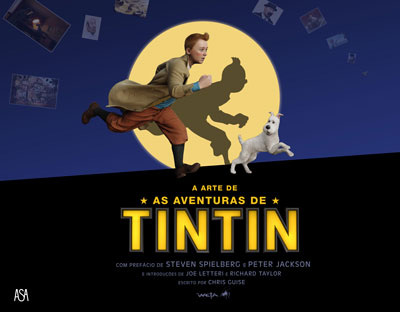
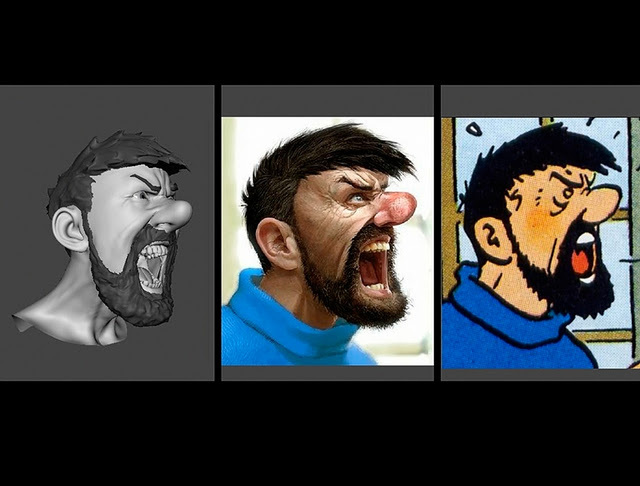
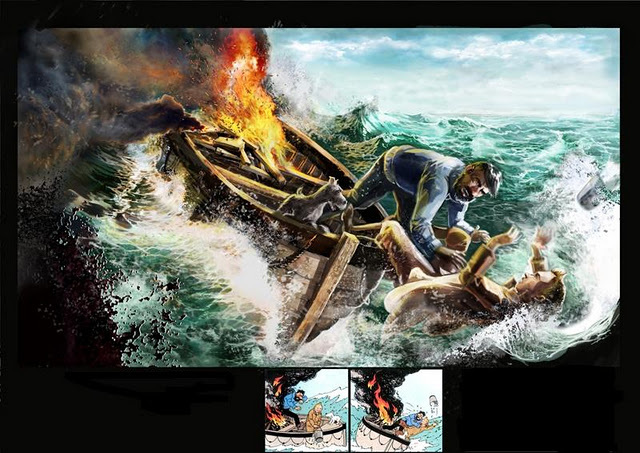
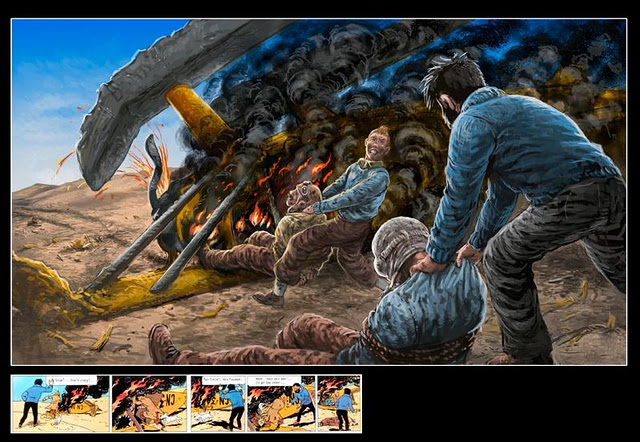
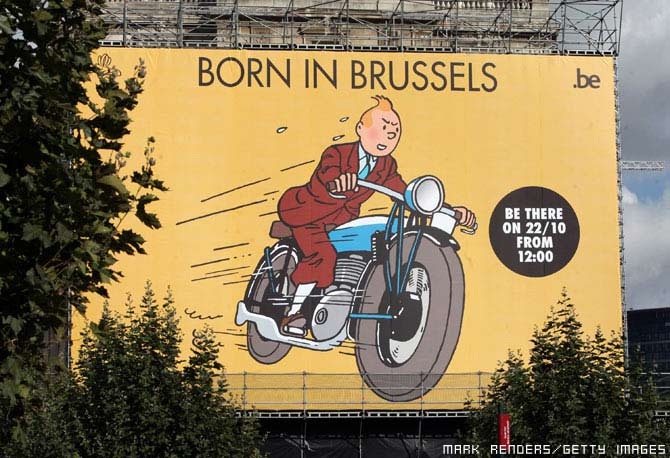
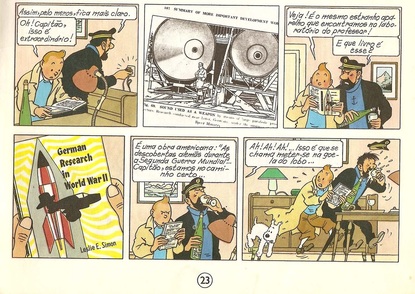
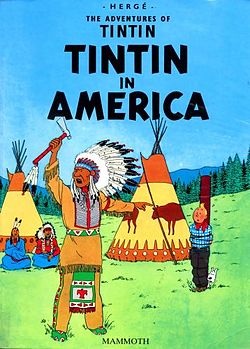
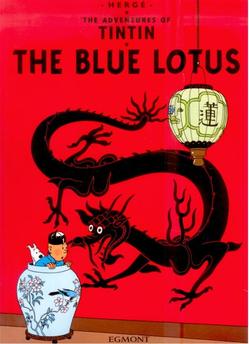
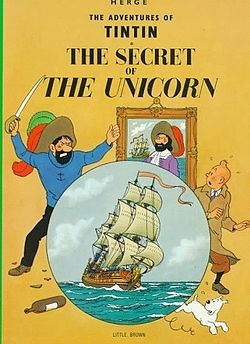
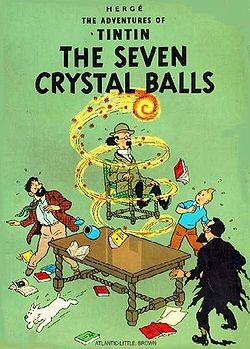
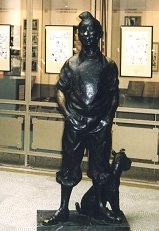
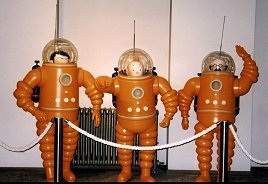
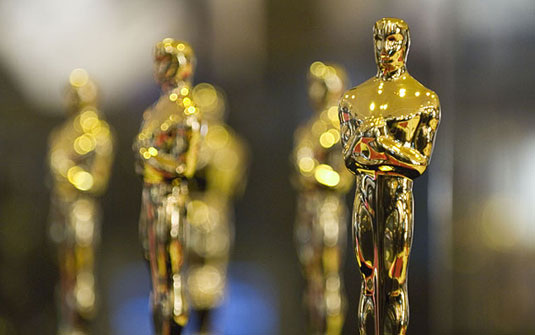
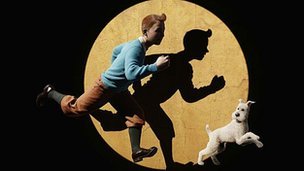
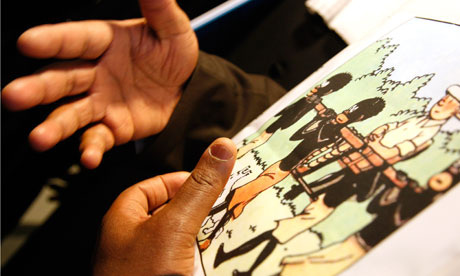
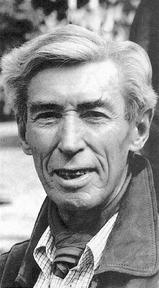
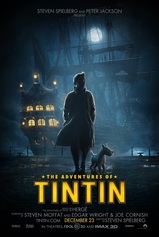
 RSS Feed
RSS Feed